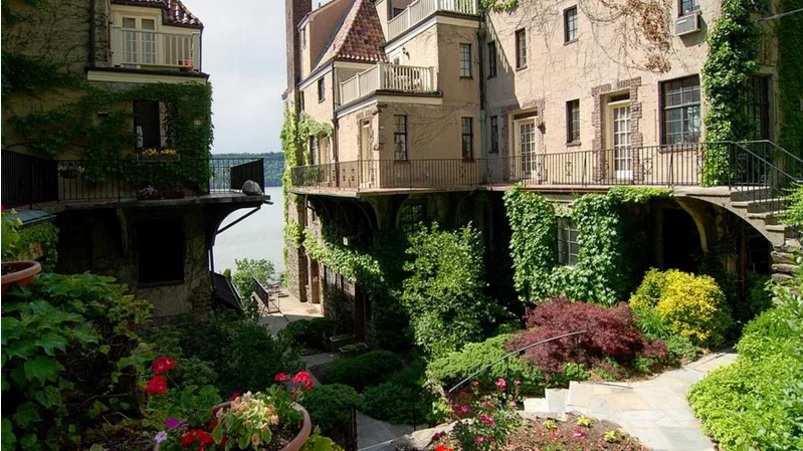 Perched atop a cliffside in the Bronx overlooking the Palisades sits one of the most charming residences within New York City: Villa Charlotte Bronte. It’s located in Spuyten Duyvil, which translated from Dutch means “spouting devil,” an appropriate moniker given the dangerous tidal currents created as a result of the confluence of the Hudson and Harlem Rivers. Despite this harsh name, Villa Charlotte Bronte was designed, and has survived, as a pastoral escape from the hustle and bustle of New York City.
Perched atop a cliffside in the Bronx overlooking the Palisades sits one of the most charming residences within New York City: Villa Charlotte Bronte. It’s located in Spuyten Duyvil, which translated from Dutch means “spouting devil,” an appropriate moniker given the dangerous tidal currents created as a result of the confluence of the Hudson and Harlem Rivers. Despite this harsh name, Villa Charlotte Bronte was designed, and has survived, as a pastoral escape from the hustle and bustle of New York City.
The residence was constructed in 1926 by John J. McKelvey, a lawyer, writer and developer, who advertised it in the New York Times for anyone whose “soul is hungry for the majesty of the river.” Attuned to the wave of high-rise apartment development taking place in northern Manhattan and other parts of the Bronx, McKelvey fought to prevent such mass destruction (and construction)—which he labeled “city ugly”—from coming to the area that had been his beloved home since the 1890s. This reference may have been in contrast to the City Beautiful movement, a reform philosophy popular around this time that introduced aestheticism, classicism, and monumental grandeur to cities.
McKelvey commissioned architect Robert W. Gardner (who also designed the Staten Island Institute of Arts and Sciences Building, later the Staten Island Museum) to design the Villa Charlotte Bronte, comprising two matching buildings separated by a central courtyard with unobstructed, picturesque views of the Hudson.
/cdn0.vox-cdn.com/uploads/chorus_asset/file/6577019/charlotte-bronte-1998.jpeg)
Designed in the style of an Italian villa, the buildings contain 17 co-operative apartments, each connected by walkways, staircases and stone arches; there are also architectural flourishes such as protruding bays, balconies, and casement windows. The exterior is made from stucco, featuring brick and stone ornamentation and multi-colored tiled roofs. Each apartment is unique, with each one having a different floor-plan as well as varying views of the Hudson. The complex also contains charming gardens as well as lush vegetation scaling a portion of the building.
Photo credit: 1) Greg Martz via TourFactory.com. 2) Villa Charlotte Bronte circa 1998
Become a Harlem Insider!
By submitting this form, you are consenting to receive marketing emails from: . You can revoke your consent to receive emails at any time by using the SafeUnsubscribe® link, found at the bottom of every email. Emails are serviced by Constant Contact








